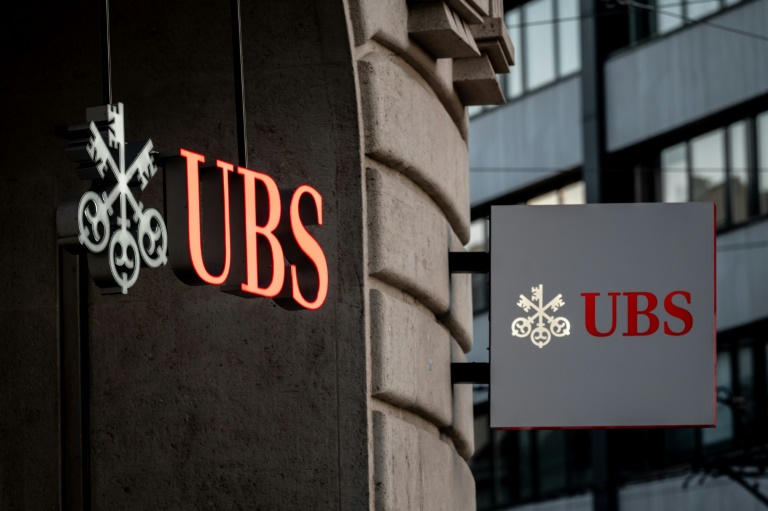AFP
UBS is expected to post solid first quarter results Tuesday, with all eyes on whether the bank is strong enough to carry through its forced alliance with stricken rival Credit Suisse.
Credit Suisse, long Switzerland’s second largest bank, revealed Monday that nearly $70 billion had been withdrawn in the first three months of 2023 alone, publishing perhaps its final quarterly results ahead of the merger.
Most of the withdrawals were made in panic around the March 19 announcement that UBS had been strongarmed by Swiss authorities into a $3.25-billion shotgun marriage to ensure its smaller, but still “too-big-to-fail” rival, did not go belly up.
Investors were on the edge of their seats for the Credit Suisse results but are also eagerly awaiting Tuesday’s UBS report to determine the magnitude of the challenges facing the banks in their mammoth merger.
Analysts polled by the Swiss financial newswire AWP expect first quarter UBS net profit to tick in at around $1.7 billion, down from $2.1 billion a year ago.
“We expect a weaker quarter for the investment bank,” analysts with the Zurich Cantonal Bank said.
On the other hand, its retail bank in Switzerland was expected to benefit from rising interest rates, they said.
US banks have set the tone, with Citigroup, Wells Fargo and Bank of America having already posted better-than-expected results, as interest rates boosted their incomes.
Investment banks like Goldman Sachs and Morgan Stanley have meanwhile seen their operations hit by shrinking market activity.
UBS’s investment banking business accounts for about a quarter of its revenue.
But investors will be particularly interested in any details about the Credit Suisse merger, especially after the smaller bank revealed Monday the desperate situation it found itself in when the deal was pushed through.
Credit Suisse hosted no press conference, so questions are “likely to be directed to UBS’s management,” Jefferies analyst Flora Bocahut said in a research note.
Credit Suisse’s results spoke clearly to the challenges ahead for UBS.
The bank said it saw 61.2 billion Swiss francs ($68.6 billion) withdrawn in the first quarter alone, following on the heels of 110.5 billion in withdrawals in the fourth quarter of 2022.
While Credit Suisse said those outflows had “moderated”, it acknowledged they “have not yet reversed”.
Swissquote analyst Ipek Ozkardeskaya told AFP that also with UBS, observers would be paying close attention to “fund inflows/outflows”, as well as net interest income and loan provisions.
But she said she did not expect the merger to “result in dramatic fund flows” for UBS, pointing out that “the confidence crisis has been managed well”.
In addition, she said, “moving funds to smaller regional banks is not necessarily a better option for clients.”
UBS chairman Colm Kelleher acknowledged during the bank’s annual general meeting earlier this month that “there is huge amount of risk in integrating these businesses”.
To ensure things go smoothly, UBS has brought back former chief executive Sergio Ermotti, who left in 2020, to oversee the takeover.
The 62-year-old silver-haired banker spent nine years at UBS’s helm, restoring its reputation after its bailout by the Swiss government and the central bank during the 2008 global financial crisis, as well as the $2.3 billion in losses racked up by a rogue trader in 2011.
UBS has also created a special risk management post focused exclusively on the merger and said Monday that its current head of overall risk management would prolong his mandate to help usher through the extremely delicate operation.
“Both banks have to be continued and integrated in the coming years,” UBS vice-chairman Lukas Gaehwiler said during the general meeting.
“This actually is a Herculean task.”






